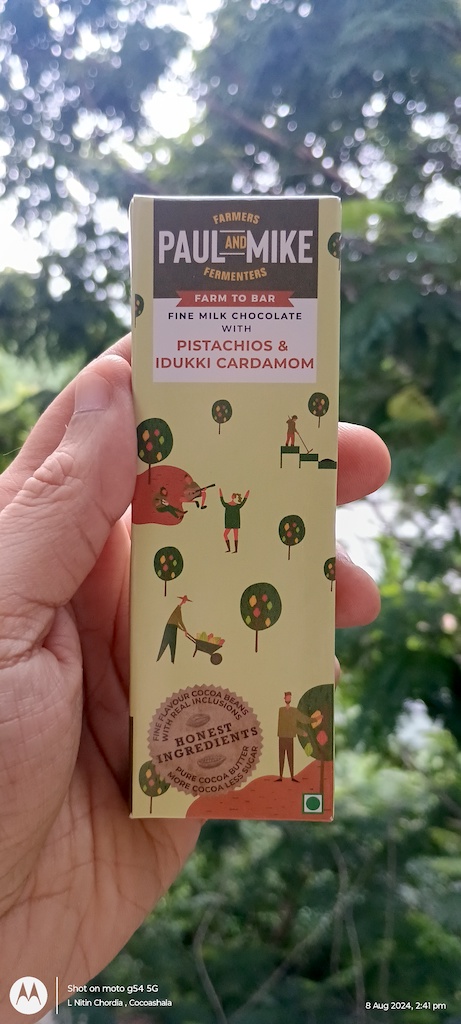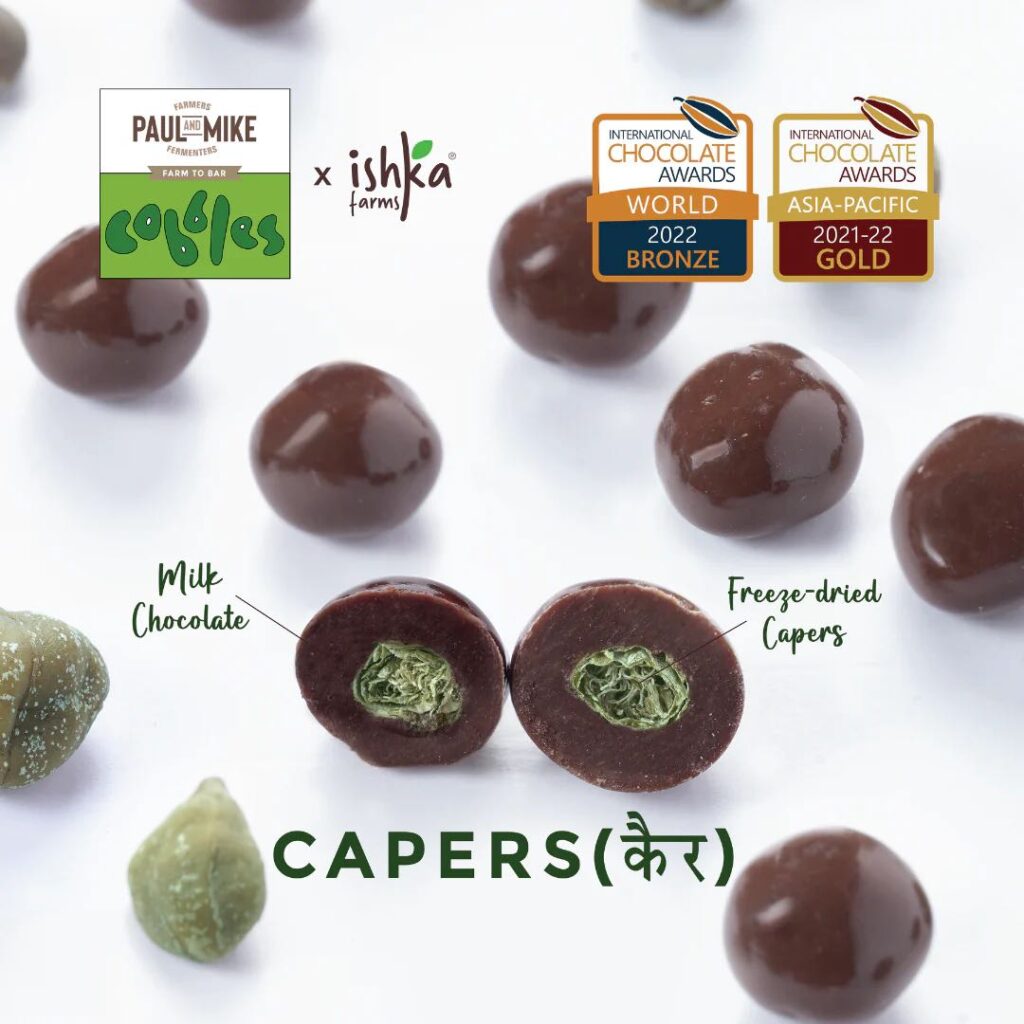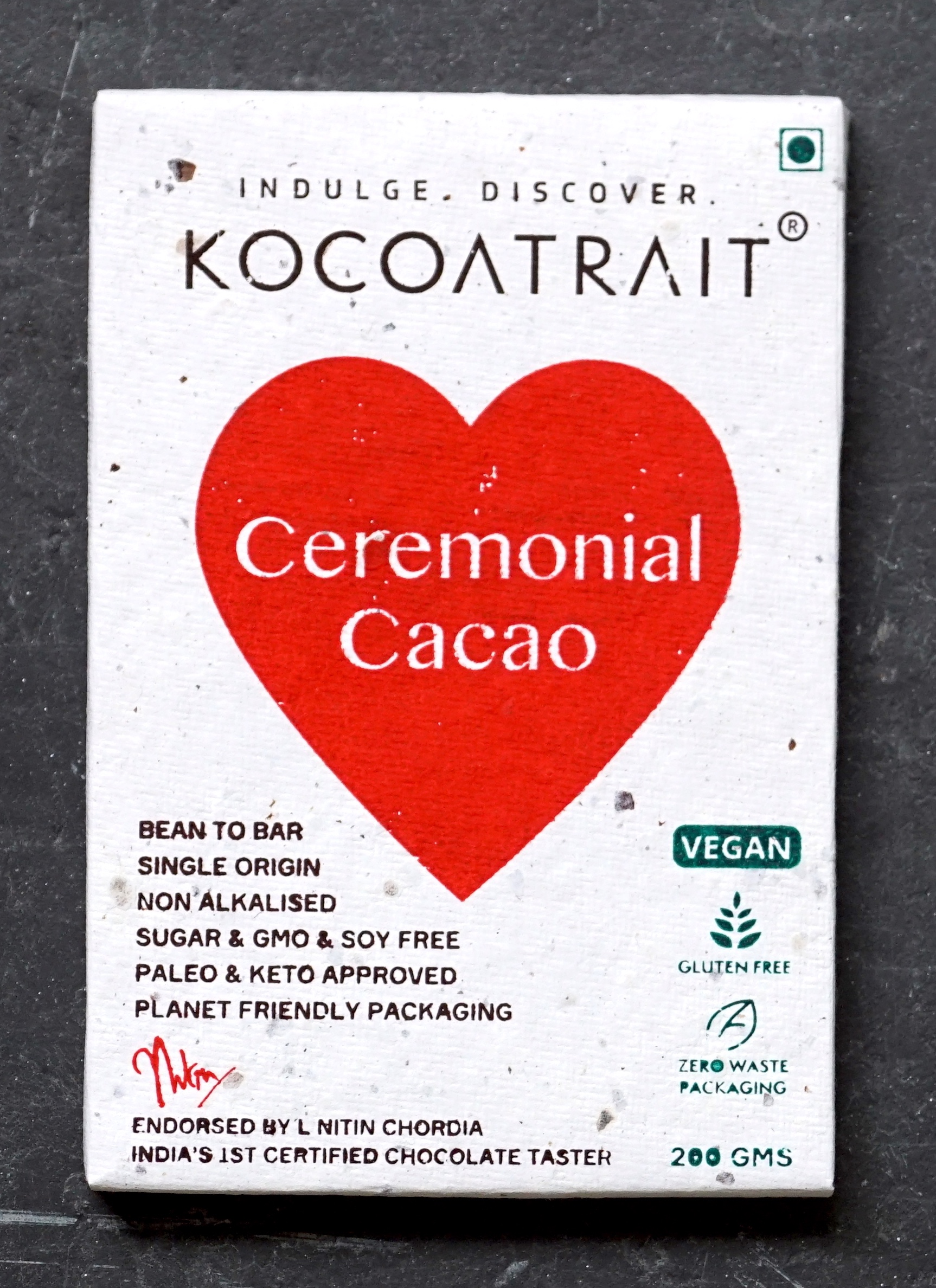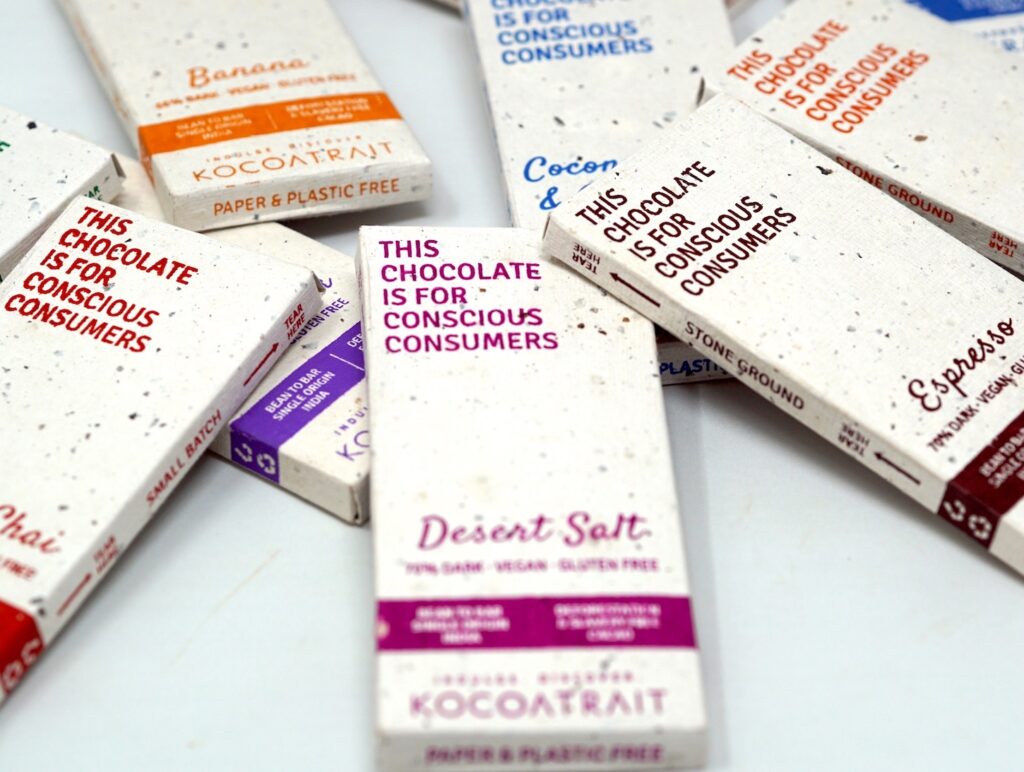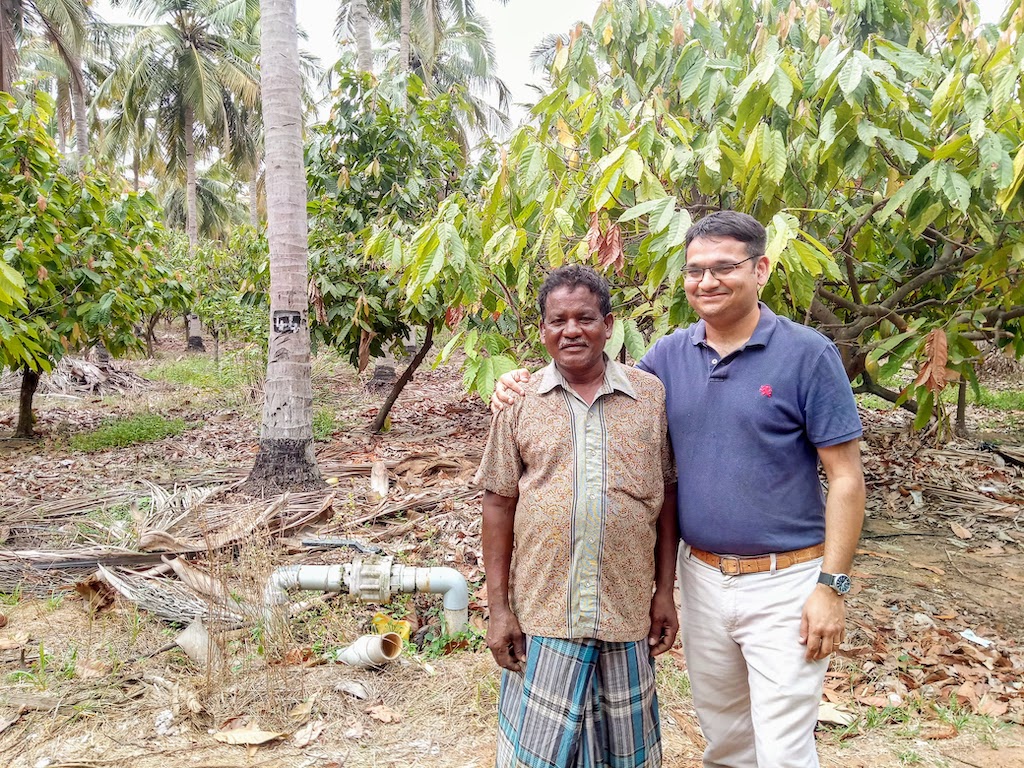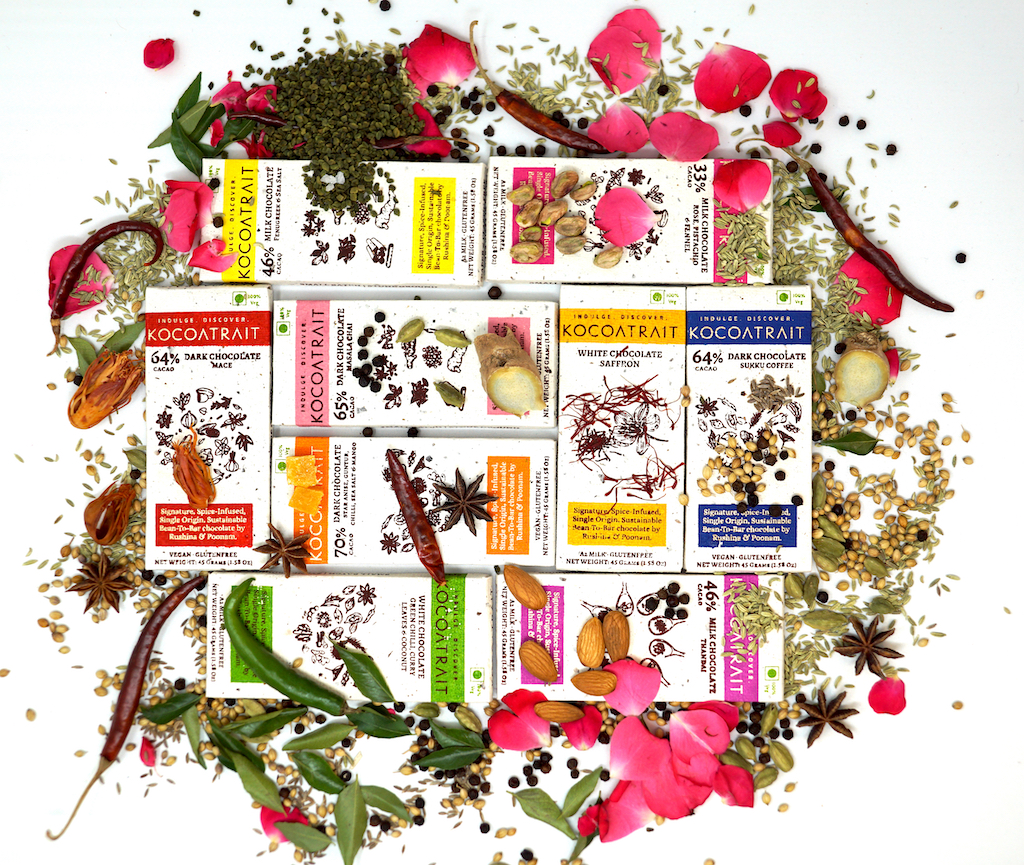As India’s 1st certified chocolate taster, I bring news that may be hard to swallow for Indian craft chocolate lovers: Indian bean-to-bar chocolates have struggled to secure awards at the prestigious International Chocolate Awards (Asia Pacific 2024 edition). The reasons are many (link). Intense competition, lack of application on behalf of chocolate makers, reliance on single origins and not acknowledging the plethora of indian flavours that can co-exist with chocolate can be mentioned as some of the reasons. In continuation to my efforts to bring you the latest and best from the Indian bean to bar chocolate world, I regularly review Indian award winners. My previous post was about the 2023 winners (there were many!) Shining out are 2 chocolates which we have tasted and reviewed for your benefit. Some of the chocolates are not yet available (at the time of publication) to buy online.
Disclaimer:
I have not been asked or paid to write this review. However, I did receive the samples and transport at no cost. I refrain from judging or reviewing aspects that are not always within the control of the chocolate maker. Therefore, I will not comment on the snap or temper of chocolate that has been transported in tropical conditions. I also avoid discussing the appearance of the chocolate in order to “take the glamour out of the equation” and maintain objectivity.
Typically, I take 55 seconds to a minute to form an opinion with 5 grams of chocolate. I make my “chocolate notes,” and then repeat the process after 15 minutes, strictly adhering to established tasting methods. I taste chocolate only after a meal (sans a dessert), limiting myself to 10 grams from two different chocolates each day. This approach helps me remain objective and prevents palate fatigue, which could lead to inaccurate judgments.
I always strive to identify any defects before I allow myself to spend more time with the chocolate. Often, I will stop a tasting session if I find myself unable to focus, and I won’t resume until the next day. While judging chocolates, I am dramatic yet sincere. This is my personal style. As they say, to each is his own. I have judged at the International Chocolate Awards (Regional & Finals) in London and multiple other locations from 2014 to 2021.
Paul & Mike – Milk Chocolate with Pistachios and Idukki Cardamom (Bronze)
The Milk Chocolate with Pistachios and Idukki Cardamom should be renamed Idukki Cardamom Milk Chocolate with Pistachios. “Heavenly” is the one word that comes to mind immediately. Read on…
To start with, the colour of the chocolate appealed to me greatly. Though it is not much to go by, the blackish colour is usually a put off indicating alkalised chocolate. The perfect light brown, akin to classic milk chocolate, was a pleasing sight. The aroma of the chocolate, had a strange but faint cardamom. It didn’t help set my expectations too high. But when I took a piece, my first encounter was with the perfect amount of cardamom being delivered as the 1st welcome note. Warm and full-bodied, (or can we say whole bodied and robust) the cardamom added a full-filling creaminess and a touch of vanilla to the chocolate. Too much cardamom usually does more harm than good, but the precise use of high-quality cardamom flavoring (oil, in this case) has certainly helped the cause and results in an experience which delights you and sets you up well for more to come.
I don’t bite the chocolate and as it started to melt, cocoa was married to the milk very well, providing a near-perfect creamy delivery. Additionally, the chocolate had a very good balance of fat and sugar. Craft chocolates can become overwhelming with the amount of fat used. The texture of this chocolate was silky and smooth with a good particle size distribution, due to very good refining and delivering a consistency we’ve come to expect from Paul & Mike.
As we enjoy the milk chocolate, a few moments on, I noticed the generous and well-spread pieces of good-sized pistachios. The crunch and nuttiness from the well-roasted pistachios plays the role of a fitter rather than a filler, flattening the sweetness very smartly. The pistachio’s fit perfectly into the flow of the experience, leaving us pieces to chew into and making for a memorable ending. I was not left with an over whelming sweet feeling.
As I finish, I usually try to pay close attention to find any defects in the chocolate and after notes or any shortcomings and find myself empty-handed with this chocolate! Defect-free! This is a delight and rare with Indian craft/bean-to-bar chocolate. This chocolate is an award winner for many reasons.
What worked in this chocolate bar for L Nitin Chordia, India’s first Certified Chocolate Taster: Balance of flavour, high-quality ingredients, and perfectly masked sweetness. What would I do better: I thought hard and I cannot seem add value to this effort to make it better. I would rate this 9/10.
Paul & Mike – Milk Chocolate Coated Salted Capers
The chocolate coated salted capers has won several awards across the years at the International Chocolate Awards. This is a marquee award winner for Paul & Mike which demonstrates the concept of a western fusion (a.k.a pairing) to Indian craft chocolate. The milk chocolate initially makes for a sweet treat and gives way to the caper on the inside. Coated in perfect amount of milk chocolate, each freeze dried caper is tangy and tart and gives a feeling of it being suspended in brine. One cannot help bite the caper once it arrives and this delivers a burst of flavours and saltiness. This product offers a simple yet fantastic balance of salt, tart, tangy and sweet and tempts you to take another shot at it. This can be called a true master class in balancing flavours.
At no point it seems very salty and the milk chocolate does a perfect balancing act. No credit should be taken away from the freeze dried capers, the real hero in the delivery. What worked for L Nitin Chordia, India’s 1st Certified Chocolate taster: Exceptional pairing of ingredients, High quality ingredients. What would I do better: Reduce a bit of salt and experiment with a few spices. I would rate this 8.5/10.
Indian bean to bar can improve their performances at the International Chocolate Awards. Read a thought piece at: https://cocoatrait.com/chocolates/revolutionizing-chocolate-the-bold-strategy-that-will-make-indian-chocolatiers-global-award-winners/
Contact L Nitin Chordia at +919600064846; nitin@cocoatrait.com




